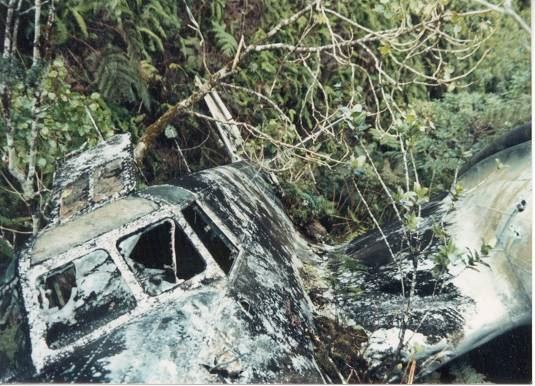The first known signal device for regulating street traffic was installed in 1868 in London, at the intersection of George and Bridge Streets near the Houses of Parliament.
The signal had two semaphore arms which, when extended horizontally, meant “stop”; and when drooped at a 45-degree angle, meant “caution.” At night, red and green gas lights accompanied the “stop” and “caution” positions.
Back in the 1860s (pre-car,) there were still lots of movement on the roads, with animal ridden and driven means.
“By the signal ‘caution,’ all persons in charge of vehicles and horses are warned to pass over the crossing with care and due regard to the safety of foot passengers.”
“The signal ‘stop’ will only be displayed when it is necessary that vehicles and horses shall be actually stopped on each side of the crossing, to allow the passage of persons on foot; notice being thus given to all persons in charge of vehicles and horses to stop clear of the crossing.” (Proclamation of Richard Mayne, London Police Commissioner, in 1868; Lay)
(At the time, these weren’t set up to handle cars (on January 29, 1886, Carl Benz applied for a patent for his “vehicle powered by a gas engine.” The patent – number 37435 – may be regarded as the birth certificate of the automobile. (Daimler))
Those were the horse and buggy days and traffic in big cities was often heavy. Police officers had to be stationed full time directing traffic at busy intersections. By 1899, the motor vehicle traffic was a negligible factor in highway traffic. (Eno, 1939)
That changed.
Spurring a boom, in 1903, Henry Ford officially opened the Ford Motor Company and five years later released the first Model T. In 1907, Henry Ford announced his goal for the Ford Motor Company: to create “a motor car for the great multitude.” (pbs)
Additional innovative techniques were incorporated and, on December 1, 1913, the Fords large-scale assembly line was officially in working order.
Ford’s 1914 production rate of 308,162 eclipsed the number of cars produced by all other automobile manufacturers combined.
With the coming of automobiles, the road situation got even worse. These, added to the people, rails, horse-drawn and others started the automobile traffic nightmare that continues today.
In response, “The American Traffic Signal Co turned over to the City of Cleveland on August 5th, the first set of traffic signals, which were installed at East 105th Street and Euclid Avenue. Hon. AA Benesch, Director of Public Safety, placed the signals in operation at five pm, at which time the traffic at that point near the entrance to Wade Park is extremely heavy. (The Motorist, August 1914)
“The opening of what promises to be a revolutionary method in handling traffic was witnessed by other city officials, members of the ‘Safety First’ committee, officers of the Chamber of Commerce, Automobile Club, insurance men, newspaper representatives, railway officials, and other invited guests of the city.”
“All were unanimous in their endorsement of the system, which consists of eight high candle power lights, four red and four green.” (The Motorist, August 1914)
The installation was patterned after the design of Cleveland inventor James Hoge; thus started the “Red light means ‘STOP’ and green light means ‘PROCEED.’ The Cleveland included a bell to warn the drivers of color changes.
Police Officer William L. Potts of Detroit, Michigan, adapted railroad signals for street use. He took the red, amber and green railroad lights and the world’s first 4-way three color traffic light. It was installed in 1920 on the corner of Michigan Avenue and Woodward (Fort Street) in Detroit. Within a year, Detroit had installed a total of fifteen of the new automatic lights.
Interconnected signals were first used in Salt Lake City in 1917. The first progressive system was proposed in 1922. The first actuated signals were installed in New Haven, East Norwalk and Baltimore in 1928.
The first automobiles appeared on the streets of Honolulu on October 8, 1899, the date on which both Henry P Baldwin and Edward D Tenney took possession of their newly arrived vehicles (both described as Wood electrics.) (Schmitt)
In the Islands, traffic was growing, as well, as reported in 1900 newspaper article, “It has been estimated that 3,594 vehicles pass the intersection at Fort and Queen Streets from 7 am to 5 pm. ….” (Pacific Commercial Advertiser, August 3, 1900; Schmitt)
The “first gas-engined automobile complete with steering wheel and tonneau,” acquired by C. M. Cooke in 1904, and the Honolulu Automobile Club later adopted this date for the “first real automobile” in the Islands. (Schmitt)
The first traffic lights in the Islands were installed at the intersection of Nuʻuanu Avenue and Beretania Street, Honolulu; an overhead signal was put into operation February 19, 1936.
On February 24 the overhead lights were “replaced by side bracket lights, flashing the green go and red stop light from a post at each corner.” The new lights were “operated by the flow of traffic itself.” (Schmitt)
The first parking meters in Hawaii were those installed by the Hawaiʻi Aeronautics Commission in the parking lot at Honolulu International Airport in August 1951.
One-hundred and one of these meters required one cent for 12 minutes or five cents an hour. The Honolulu central business district did not have on-street parking meters until February 1, 1952.
The earliest public off-street parking facility operated by the City and County of Honolulu was one opened at Beretania and Smith Streets on December 19, 1952. (Schmitt)






















































